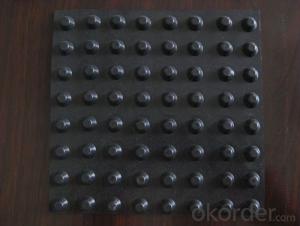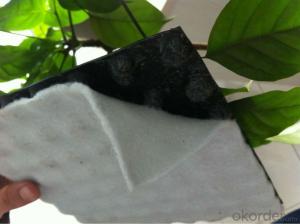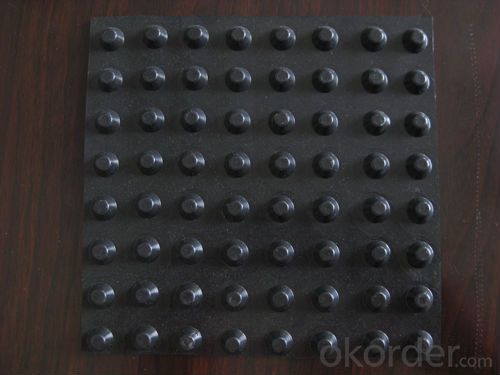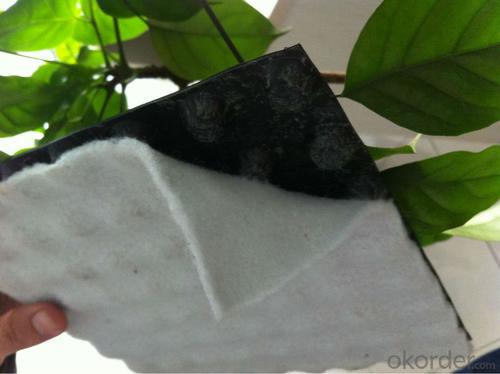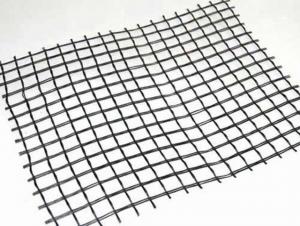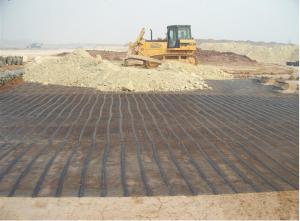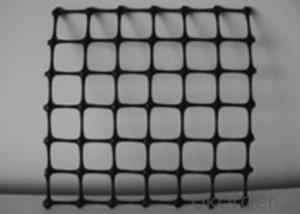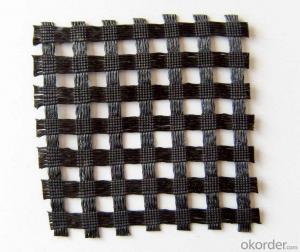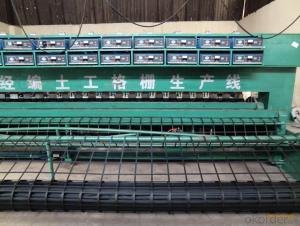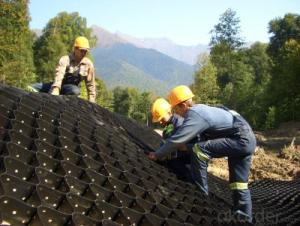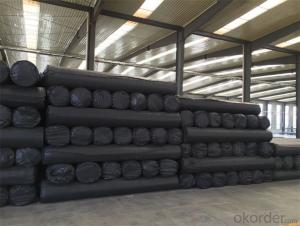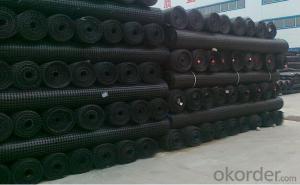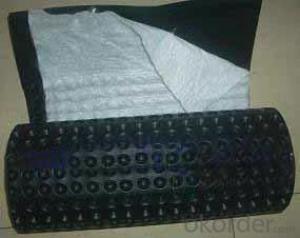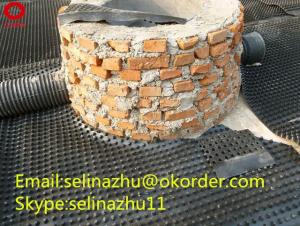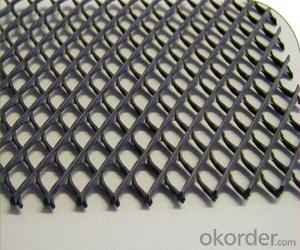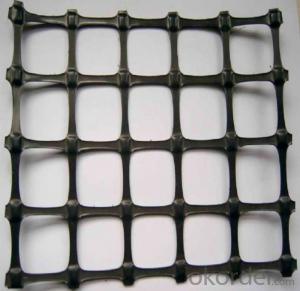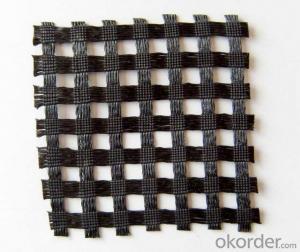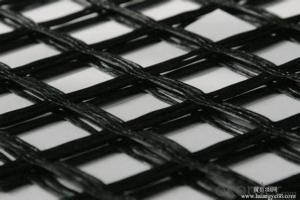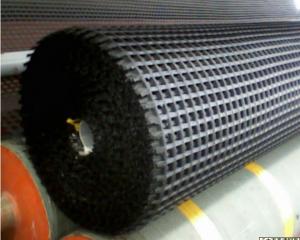Geocells Price Dimpleboards / Strip Drains / Sheet Drains / Geo Composite
- Loading Port:
- Qingdao
- Payment Terms:
- TT OR LC
- Min Order Qty:
- 1000 m
- Supply Capability:
- 50000 m/month
OKorder Service Pledge
OKorder Financial Service
You Might Also Like
Specifications
dimpleboards
1.Geotextile bonded to a dimpled sheet
2.Lightweight and easy to use
3. be easily cut and joined
dimpleboards / strip drains / sheet drains / geo composites
About the Goecomposite drainage board / drainage sheet
It is comprised of a dimpled high crush resistant plastic core with a single layer geotextile filter bonded to the core to provide a drainage sheet that can collect and filter water ingressing from backfill soils.
FEATURES AND BENEFITS
1) Highly permeable Geotextile bonded to a dimpled sheet drainage board
2) Filters water and allows free drainage
3) Protects waterproof coatings from soil and rock damage
4) Resistant to all commonly occurring ground chemicals
5) Lightweight and easy to use
6) Reduces the quantity of expensive drainage aggregate
7) Can be easily cut and joined
Application
1) Retaining walls
2) Basement walls
3) Reduction in hydrostatic pressure behind retaining walls
4) Additional protection to waterproofing membranes
5) Horizontal drainage for roof tops and planter boxes
- Q: Are geogrids fire-resistant?
- No, geogrids are not fire-resistant.
- Q: Can geogrids be used in reinforcement of bridge abutments on soft clays?
- Yes, geogrids can be used in the reinforcement of bridge abutments on soft clays. Geogrids are commonly used as soil reinforcement materials to improve the stability and load-bearing capacity of weak or soft soils. They are effective in distributing loads and reducing soil settlement, making them suitable for reinforcing bridge abutments on soft clays.
- Q: How do geogrids enhance the stability of embankments?
- Geogrids enhance the stability of embankments by providing reinforcement and increasing the load-bearing capacity of the soil. They act as a structural element by distributing the applied loads more evenly, reducing the risk of slope failure and settlement. Additionally, geogrids increase the shear strength of the soil, preventing lateral movement and erosion, thereby improving the overall stability of the embankment.
- Q: What are the design guidelines for geogrid-reinforced retaining walls?
- Design guidelines for geogrid-reinforced retaining walls include considering factors such as soil properties, wall height and slope, geogrid type and spacing, construction methods, and drainage. The design should ensure proper stability, prevent excessive deformation, and provide adequate drainage to withstand lateral earth pressures. It is crucial to follow industry standards and guidelines, conduct thorough site investigations, and consult with experienced engineers to ensure a safe and efficient design.
- Q: Can geogrids be used in subgrade stabilization applications?
- Yes, geogrids can be used in subgrade stabilization applications. Geogrids are commonly used to reinforce and stabilize weak soils in subgrade construction. They provide tensile strength and improve load distribution, ultimately enhancing the stability and performance of the subgrade.
- Q: Fiberglass grille width
- Width indicators are in 1-6
- Q: The geogrid is not less than 3 meters on each side, what does it mean?
- If each side is folded three meters, then it is folded. Design requirements are clearly not for this purpose,
- Q: What is the effect of cyclic loading on geogrid behavior?
- The effect of cyclic loading on geogrid behavior can lead to degradation and decreased performance over time. Continuous repetitive loading can cause the geogrid to undergo stress and strain cycles, which can result in material fatigue, reduced stiffness, and a decrease in its ability to provide reinforcement or confinement. This can lead to increased deformation, reduced load-bearing capacity, and potential failure of the geogrid. Therefore, it is crucial to consider the potential effects of cyclic loading when designing and using geogrids in engineering applications.
- Q: Are geogrids suitable for use in mining tailings dams?
- Yes, geogrids are suitable for use in mining tailings dams. Geogrids are commonly used in these applications due to their ability to provide reinforcement, stabilization, and containment of the tailings material. They help to enhance the overall stability and strength of the dam structure, preventing erosion and improving long-term performance. Additionally, geogrids offer cost-effective solutions by reducing the need for excessive amounts of fill material and ensuring the integrity of the dam in mining tailings operations.
- Q: In the reinforced earth retaining wall, the geogrid is connected with the panel
- In order to ensure the continuity of the reinforced soil, laying in the void design based on the engineering environment need to be flexible, prefabricated into various shapes, can provide the same type of geogrid small pieces of good, and cover all the reinforced area; for bend shop visual effect; can also use color cement, add art wall. No panel reinforcement design of geogrid, in the corner there will be some overlap in geogrid, geogrid reinforced earth retaining wall is also called anti package type or wrap-reinforcedearth retaining wall, the wall is made of mesh bags to fill the overlap coefficient of friction will be reduced, must be laying a layer of 10mm ~ 20mm thick the soil geogrid anti package into each layer of geogrid is a special connecting rod is connected with the shape of the coarse sand layer, separate the two layer of Geogrid to ensure friction resistance. As a whole, the mesh bag filling has been mixed for local growth of grass and shrub seeds, seeds, after months of growth after the formation of green ecological wall. The utility model not only protects the safety of the geogrid, but also beautifies the environment of the retaining wall project.
Send your message to us
Geocells Price Dimpleboards / Strip Drains / Sheet Drains / Geo Composite
- Loading Port:
- Qingdao
- Payment Terms:
- TT OR LC
- Min Order Qty:
- 1000 m
- Supply Capability:
- 50000 m/month
OKorder Service Pledge
OKorder Financial Service
Similar products
Hot products
Hot Searches
Related keywords
